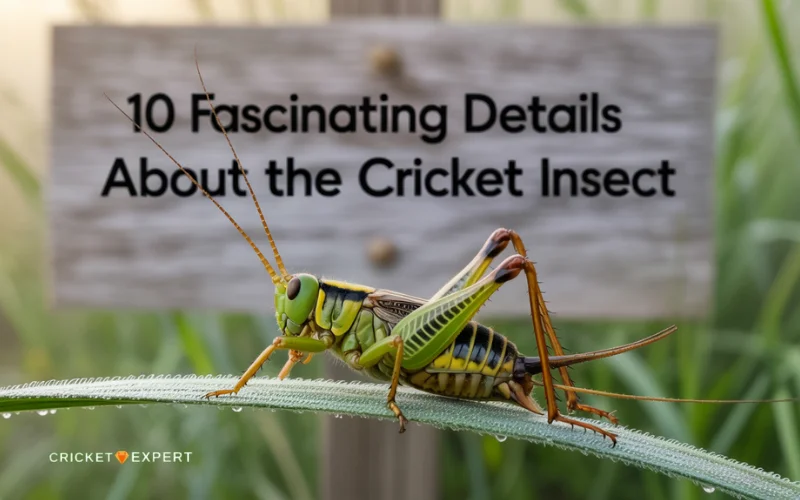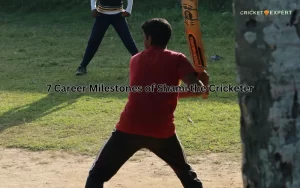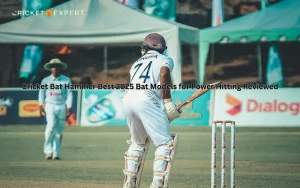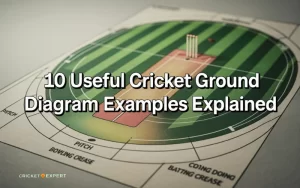Crickets are one of the most recognized insects in the world, often admired for their unique sound and distinct body structure. A cricket insect picture captures the beauty and details of this small creature that many people overlook in their daily lives top 10 cricket jersey design. When you closely observe such a picture, you can uncover many fascinating aspects about the insect’s anatomy, behavior, and symbolism in different cultures. This article explores ten fascinating details about the cricket insect picture that make it more than just an ordinary photograph.
The Detailed Structure of the Cricket Body
A cricket insect picture highlights the insect’s three-part body structure which includes the head, thorax, and abdomen. The head carries the eyes and antennae, which are very prominent in close-up photos. The thorax is where the wings and legs are attached, showing the strength and mobility of the insect. The abdomen, long and segmented, is often easily seen in a clear image, especially when the cricket is resting or singing. Observing these parts in a picture helps us understand how crickets are built for survival and communication.
The Long Antennae Seen in Every Image
One of the most noticeable features in a cricket insect picture is the pair of long antennae extending from its head. These are sometimes longer than the insect’s own body. Antennae are used for sensing the environment, detecting vibrations, and locating food or mates. A photograph allows us to see the fine details of these delicate structures, something that might be missed with the naked eye.
The Power of the Cricket Legs
In a cricket insect picture, the hind legs often stand out because of their size and strength. These legs are designed for jumping, allowing crickets to move quickly to avoid predators. The enlarged femur part of the leg gives them the force they need for strong leaps. Photos that capture these legs in detail show just how powerful and well-designed these insects are for survival in the wild.
The Unique Wings Used for Sound
Many cricket insect pictures display the wings folded neatly on the back of the insect. These wings are not just for short bursts of flight but are also used to produce the famous chirping sound crickets are known for. By rubbing their wings together, male crickets create a song that attracts females and establishes territory. A detailed image allows us to see the fine textures of the wings that play such an important role in cricket communication.
The Compound Eyes in Close View
If you look at a cricket insect picture closely, you will notice the large compound eyes on either side of the head. These eyes are made up of many small lenses that help the cricket detect movement and light changes. This is why crickets are often quick to react when someone approaches. A close-up photo gives a clear view of the patterns and structure of these eyes, showcasing how complex their vision system really is.
The Ovipositor in Female Crickets
In certain cricket insect pictures, especially those of female crickets, you may notice a long needle-like structure extending from the back of the abdomen. This is called the ovipositor, which is used to lay eggs in the soil or plant material. It is a fascinating detail that shows how crickets continue their life cycle. Without a detailed image, many people might never realize that female crickets carry such a specialized organ.
The Symbolism of Crickets in Culture
A cricket insect picture does not just display an insect but also connects to deeper cultural meanings. In many cultures, crickets symbolize luck, prosperity, and protection. In Chinese tradition, keeping crickets in cages and admiring them was a sign of good fortune. In literature and folklore, a cricket is often seen as a symbol of guidance and comfort. When captured in a picture, the insect becomes a representation of these cultural values, making the image meaningful beyond its scientific interest.

The Camouflage and Colors in the Picture
Looking at a cricket insect picture, you will notice the natural colors and patterns on its body. Most crickets are brown, black, or green, allowing them to blend into their environment. This camouflage protects them from predators such as birds, reptiles, and small mammals. High-quality photographs highlight these colors and textures, showing how well-adapted crickets are to their natural surroundings.
The Behavior Captured in Images
Sometimes a cricket insect picture captures more than just a still body. It can show the cricket in motion, chirping, feeding, or hiding. Each behavior tells us something about the life of the insect. A photo of a cricket feeding shows its strong mouthparts, while an image of one hiding under leaves reflects its instinct to stay safe. Through pictures, we gain insights into the everyday habits of this fascinating insect.
The Educational Value of Cricket Pictures
Cricket insect pictures are not just visually appealing but also serve as educational tools. They are widely used in textbooks, scientific studies, and nature guides to help people learn about the anatomy and lifestyle of crickets. Students and researchers often rely on these images to study details that are not easy to observe in real life. The clarity of a good picture allows people to appreciate and understand crickets in ways that simple observation cannot achieve.
Conclusion
A cricket insect picture is far more than just an image of a small creature. It is a detailed look into the world of crickets, highlighting their body structure, behavior, and cultural importance. From their long antennae and powerful legs to the symbolic meanings they hold in different traditions, crickets become truly fascinating when studied through photographs. Each picture not only captures the physical beauty of the insect but also provides insights into its life and role in nature. By observing and appreciating cricket insect pictures, we learn to respect the complexity and uniqueness of even the smallest creatures around us.









